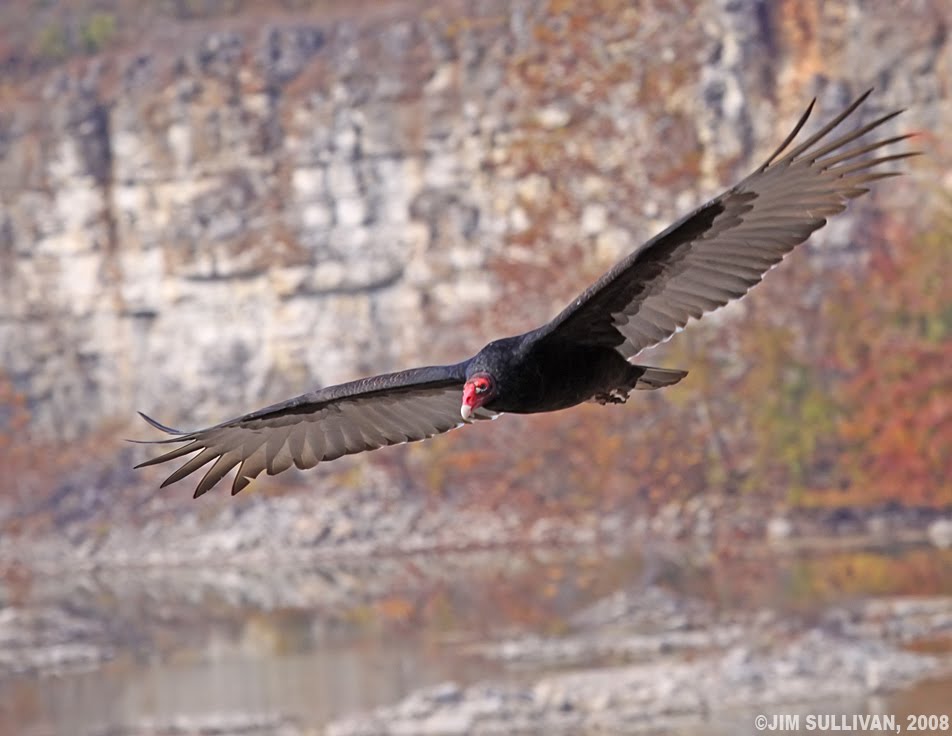American Robins are great birds. So are Red-winged Blackbirds. Ditto for American Woodcocks. Each of these species have fans who herald their return as a sign that spring is around the corner. That’s perfectly acceptable and something I will not quibble with in the least. American Robins, Red-winged Blackbirds, and American Woodcocks are all species that migrate back to Indiana in February.
But, I think I have a new personal harbinger of spring and that is the Turkey Vulture. It too returns to Indiana in February. American Robins and Red-winged Blackbirds actually winter in Indiana in some numbers. Robins can be found in many bigger cities in most winters and Red-winged Blackbirds number in the tens, if not hundreds, of thousands in certain places in southwest Indiana. American Woodcock is a rare winter resident in mild winters but often returns in late January or February. However, for most people, they have to make a special trip to grassland habitat to hear and see a woodcock. It’s not something you stumble upon in the big city if you are like me.
Being in Indianapolis, the 14th largest city in the nation, I am very likely to see American Robins all winter long. That’s especially so now, compared to decades ago, since developers and homeowners have planted so many fruit-bearing ornamentals. I often tell people who want to find an American Robin in January for their annual list to visit an Indianapolis office park or a mall. Occasionally, I’ll see a Red-winged Blackbird in winter in Indianapolis but they are not too common. But, if I drive a few hours to Greene or Sullivan Counties and explore agricultural and grassland habitat, I am certain to find the species in the thousands. A singing and displaying Red-winged Blackbird male is certainly a treat to behold in February as the birds move further north in Indiana. As stated previously, one who lives in Indianapolis needs to schedule a trip at dusk to go and find a woodcock.
While the Turkey Vulture winters in Indiana, it is such an uncommon species in most of the state that its return in February is noteworthy. Such was the case when I saw one in flight midway between Fort Harrison State Park and my home on the northeast side of Indy on February 11, 2011. “Wow, my first Marion County Turkey Vulture of the year”, is the thought that came to mind as I saw the bird gliding to the north with occasional burst of wingbeats. Spring must really be around the corner with the vultures on the move. Vultures survive on dead things; be it deer entrails left by hunters, or as is typically seen, on various mammals killed by cars. Presumably, snow makes their finding carrion more difficult and they retreat southward during the heart of Indiana’s winter.
I equate a Turkey Vulture’s return to snow melt and warming temperatures. That happens to be the case in Indianapolis as I write this – finally a spell of temperatures approaching and even exceeding 40 degree F. Hallelujah! In the days ahead, more vultures will be seen. All will be Turkey Vultures; although I did have one flock of eight Black Vultures on Valentine’s Day 2009. Turkey Vultures don’t get a lot of respect because it is not a cute, cuddly species that people can ooh and ahh over. Most will agree that the bird is majestic. But, in a utilitarian, self-reliant sort of way. The red head, bereft of feathers, makes the otherwise blackish bird look odd. Of course, the featherless head allows it to feed on carrion without worrying about mussing its head feathers.
Possibly if Turkey Vultures were more visible at nest sites people would warm up to them more. But, the species chooses a nest site – be it a hollowed-out tree top, abandoned building, on top of other man-made structures, or underneath power line right of ways – that just doesn’t allow for close looks by most of us. Arguably, a nestling Turkey Vulture is a cutey of furry white feathers and a black head. If the species built stick nests and were easily visible I think people would soften their otherwise indifferent stance about their presence. Like all bird species, a Turkey Vulture is a marvelous thing and I welcome their return each February. Their presence in the Indianapolis area is surely a sign that warmer temperatures are on their way.
Don Gorney
Note: Photo of a Turkey Vulture in flight by Jim Sullivan.

